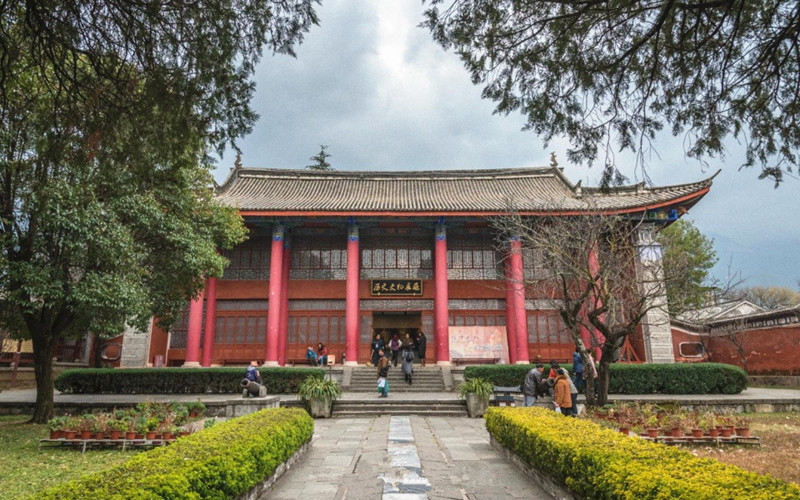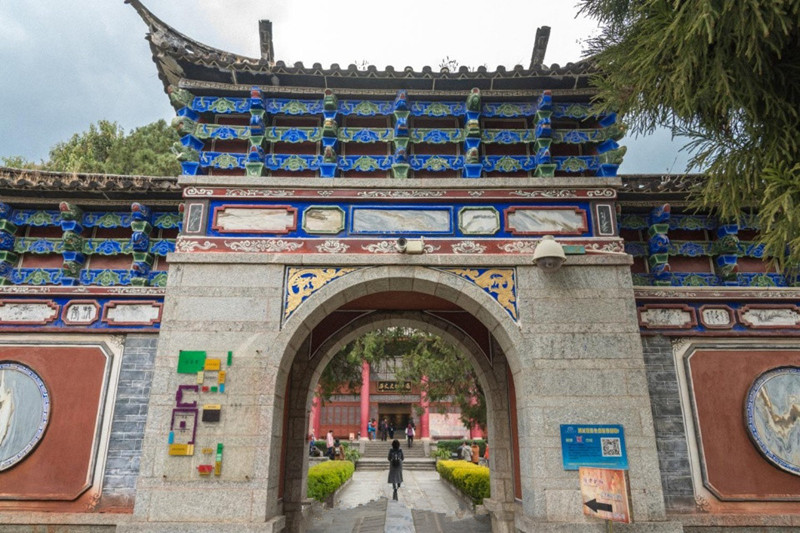Grand Marshal Residence of the President in Dali City
Overview
The Grand Marshal Residence of the President (总统兵马大元帅府, Zǒngtǒng Bīngmǎ Dàyuánshuài Fǔ) is located on the southern section of Fuxing Road (复兴路, Fùxīng Lù) within Dali City (大理市, Dàlǐ Shì), covering an area of 21,510 square meters. Originally built during the reign of the Kangxi Emperor (康熙, Kāngxī) in the Qing Dynasty (清朝, Qīngcháo), this site served as the Governor’s Office (提督府, Tídú Fǔ).
In 1856, during the sixth year of the Xianfeng Emperor’s reign (咸丰, Xiánfēng), the anti-Qing uprising led by Du Wenxiu (杜文秀, Dù Wénxiù) and predominantly consisting of Hui people (回族, Huízú) captured Dali. On September 17, they established a government, and on September 25, they erected an altar at Nanxiaochang (南校场, Nánxiàochǎng), where Du was elected as the Grand Marshal. The Governor’s Office was transformed into the Grand Marshal Residence, featuring two main courtyards, an entrance gate, an emperor’s platform (天子台, Tiānzǐ Tái), and a red stone terrace (丹墀, Dānchí), along with side halls and flower halls to the north and south.
Architectural Features
The residence was equipped with a council hall (议事厅, Yìshì Tīng), a military affairs office (军机处, Jūnjī Chù, also known as Baihu Hall, 白虎堂, Báihǔ Táng), living quarters, a study, a guards’ room, and storage spaces, making it a large architectural complex. Du Wenxiu also composed couplets displayed in the main hall:
“天生英雄扭转中原世界;
地出豪杰戳破胡儿乾坤。”
(“Heaven gives birth to heroes who can turn the world;
The earth produces heroes who break through the barbarian realms.”)
The residence is surrounded by high walls and battlements, constructed of bricks and stones, modeled after imperial city architecture, and is commonly referred to as the “Forbidden City” (紫禁城, Zǐjìn Chéng).
Historical Context
After the uprising’s failure in 1872 during the eleventh year of the Tongzhi Emperor’s reign (同治, Tóngzhì), most of the Grand Marshal Residence was demolished. It underwent further reconstruction in the tenth year of the Guangxu Emperor’s reign (光绪, Guāngxǔ) but remained a Governor’s Office for Yunnan. During the Republic of China (民国, Mínguó) era, it served as the headquarters for various military regions, including the Tengchong-Dali (腾冲大理, Téngchōng Dàlǐ), Chuxiong-Dali (楚雄大理, Chǔxióng Dàlǐ), and the Western Yunnan Military Region (滇西师管区, Diān xī Shī Guǎnqū).
In 1987, based on historical records, the council hall, Baihu Hall, the Forbidden City Gate (紫禁门, Zǐjìn Mén), the main entrance, study, and southern city wall of the Forbidden City were gradually restored. The architectural layout is meticulous and structured.
Dali Museum
In 1987, the Dali Museum (大理市博物馆, Dàlǐ Shì Bówùguǎn) was established within the residence, covering 1,404 square meters and housing over 2,800 artifacts, including local stone tools, pottery, bronze ware, porcelain, jade, and various stone, jade, and wood carvings as well as calligraphy. In 1990, some of the museum’s exhibits received high praise from the international cultural heritage community during exhibitions in Switzerland and Japan.
Visitor Information
- Chinese Name: 总统兵马大元帅府 (Zǒngtǒng Bīngmǎ Dàyuánshuài Fǔ)
- Address: 126 Fuxing Road, Dali City (大理市复兴路126号, Dàlǐ Shì Fùxīng Lù)
- Area: 21,510 m²
Practical Information
- Estimated Visit Duration: Less than 1 hour
- Opening Hours: 08:00 – 18:00 (January 1 – December 31, Monday – Sunday)
- Ticket Price: Please consult the site for specific details.
Transportation
- Public Transport: Take the San Ta dedicated line to Yita Kou Station (一塔口站, Yī Tǎ Kǒu) and walk to the site.
How to Get There
To visit the Grand Marshal Residence of the President:
- By Car: Navigate through Dali city toward Fuxing Road.
- By Bus: Public buses are available to Yita Kou Station, followed by a short walk.
Travel Tips
- Best Time to Visit: Spring and autumn for mild weather.
- What to Bring: Comfortable shoes for walking and a camera for capturing the historical architecture.
- Cultural Etiquette: Be respectful when exploring, as the site holds significant historical importance.
The Grand Marshal Residence offers visitors a deep dive into Dali’s rich history and cultural heritage, making it a must-see destination for anyone exploring the region.



















